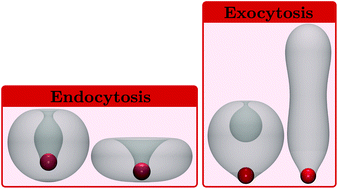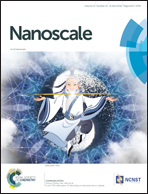Nanoparticle wrapping at small non-spherical vesicles: curvatures at play†
Abstract
Nanoparticles in biological systems encounter lipid-bilayer membranes as barriers. They interact with plasma membranes, membranous organelles, such as the endoplasmic reticulum and the Golgi apparatus, the nucleus, and intracellular and extracellular vesicles, such as autophagosomes, lysosomes, and exosomes. Extracellular vesicles have recently attracted particular attention, as they are involved in the transmission of biological signals and as regulators for biological processes. For example, exosomes, small vesicles containing proteins, mRNA, and miRNA, that are released by cells into the extracellular environment, have been suggested to participate in tumor metastasis. Furthermore, vesicles can be applied as targeted-drug-delivery systems. We systematically characterize wrapping of spherical nanoparticles that enter and exit vesicles, depending on particle size, vesicle size, vesicle reduced volume, and membrane spontaneous curvature. We predict the complex wrapping behavior, in particular for large particle-to-vesicle size ratios, where the shape changes of the free membrane contribute significantly to the deformation energy and where nanoparticle wrapping transitions and vesicle shape transitions are coupled. Partial-wrapped membrane-bound particles impose boundary conditions on the membrane that stabilise oblates and stomatocytes for particle entry, and prolates and stomatocytes for particle exit. Our results suggest that nanoparticles may stimulate autophagocytic engulfment, which would facilitate transport of the nanoparticles into lysosomes and would lead to subsequent degradation of nanoparticle-attached proteins.



 Please wait while we load your content...
Please wait while we load your content...